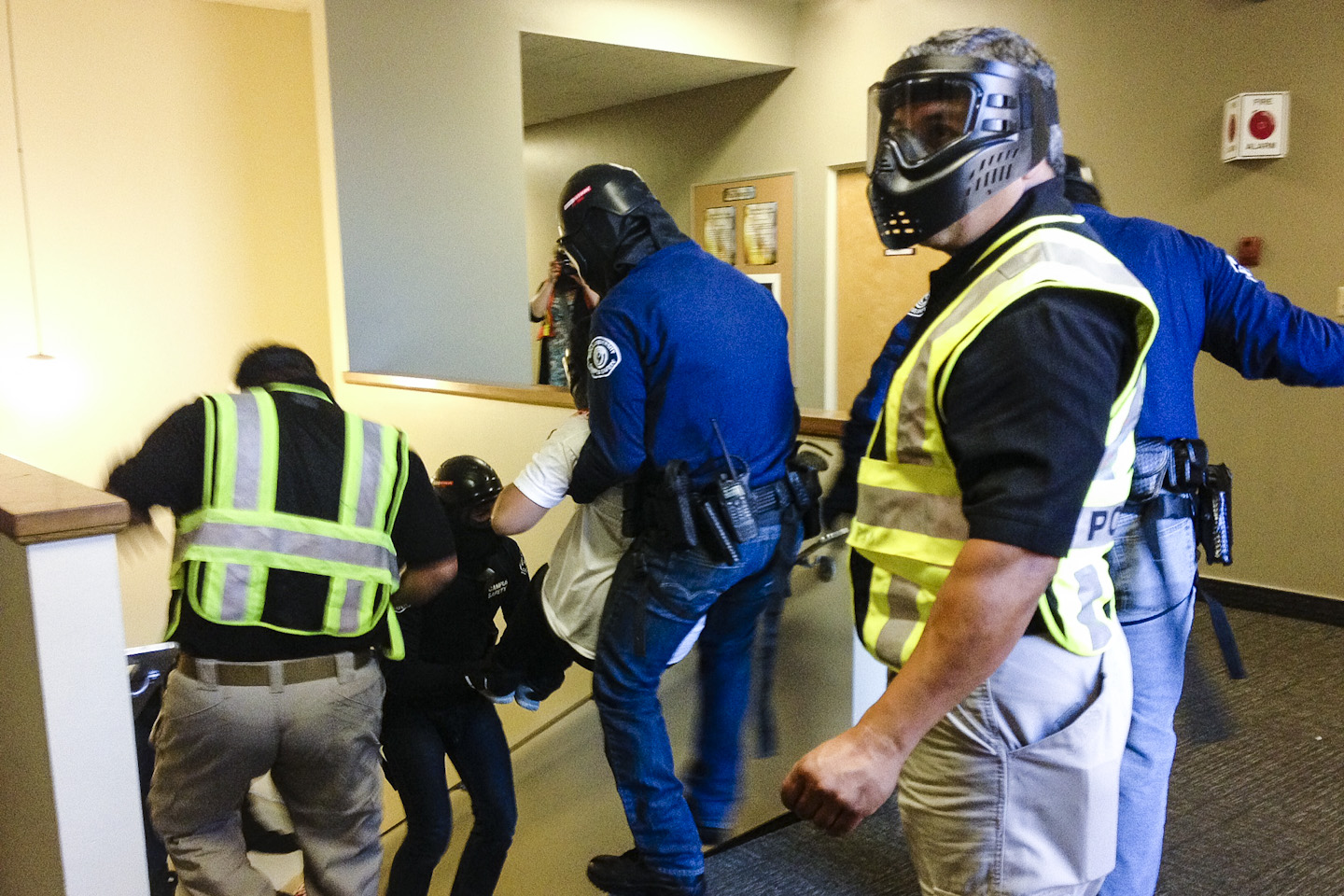Screams and gunshots resonated throughout Sutherland Hall on Saturday morning as Campus Safety officers participated in an active shooter training. In the midst of students bloodied with sickly wounds to simulate an actual crisis, nursing students and the health center staff were involved in the training for the first time.
The full-scale emergency response exercise was created to train Campus Satefy officers how to react if violence erupts on campus and emergency responders are delayed.
This drill was not a result of the shootings in Newtown, Conn. or Aurora, Colo.
“The department conducts this drill every year and has been planning this drill since early last December,” said John Ojeisekhoba, chief of Campus Safety. “It’s standard for us, in the last three years, to conduct such training. Not that we are expecting anything to happen on campus, but rather just a proactive measure.”
The past three years of running this simulation solely involved Campus Safety officers, external tactics trainers and student participants. However, this year they incorporated the health center and nursing students in preparation for times of triage — when personnel must decide who requires the most attention in terms of medical urgency.
CAMPUS SAFETY REACHES OUT TO NURSING DEPARTMENT
Nursing professor Dr. Susan Elliott explained that being prepared for disaster is part of the content in the public health course and is also a routine training in hospitals.
“The training exercise required utilization of their nursing knowledge and skill which included patient safety, patient well-being, critical thinking, clinical reasoning, inter-professional communication and collaboration, and leadership,” Elliott wrote in an email.
The exercise began with simulated gunshots, initiating piercing screams from the 20 students playing victims as they helplessly lay on the ground. Students began wailing from all around the first and second floors of Sutherland Hall.
Multiple Campus Safety officers rushed into the building. After the faux shooter was caught and detained, their next priority was to help the victims while waiting for medical responders.
“We’ll be the ones who will get here way before the sheriff’s department gets here,” Ojeisekhoba said.
The exercise had marks of authenticity. The numerous mock victims were dressed with fake blood and wounds. As in real life, some of the victims did not survive.
“[Students] should feel more secure in knowing that our officers are trained just in case it does happen,” said Aimee Moreno, a freshman nursing major.
Moreno played a victim who was shot in her left shoulder. She followed officers' instructions as they told her to quickly evacuate the building.
A CALL TO GREATER AWARENESS
“We shouldn’t panic, we shouldn’t freak out, we should just let them do their job and know they’re the ones in control,” Moreno said.
Daniel LaPoint, a sophomore Christian ministries major and participant in the simulation, expressed his appreciation that Biola is taking essential measures in training the officers.
“It’s good to be aware of the things that could happen and how we can prevent them,” LaPoint said.
After running through the simulation, the trainers briefed officers on what they did right and what they need to improve. Chief Ojeisekhoba said improving tactical aspects is necessary in maintaining safety on campus. To refine the officers’ response, they ran through the simulation a total of five times.
“We just want to get better. We have a role to protect our students, faculty and staff. And the key question is what the parents expect us to do with their sons and daughters here,” Ojeisekhoba said.








